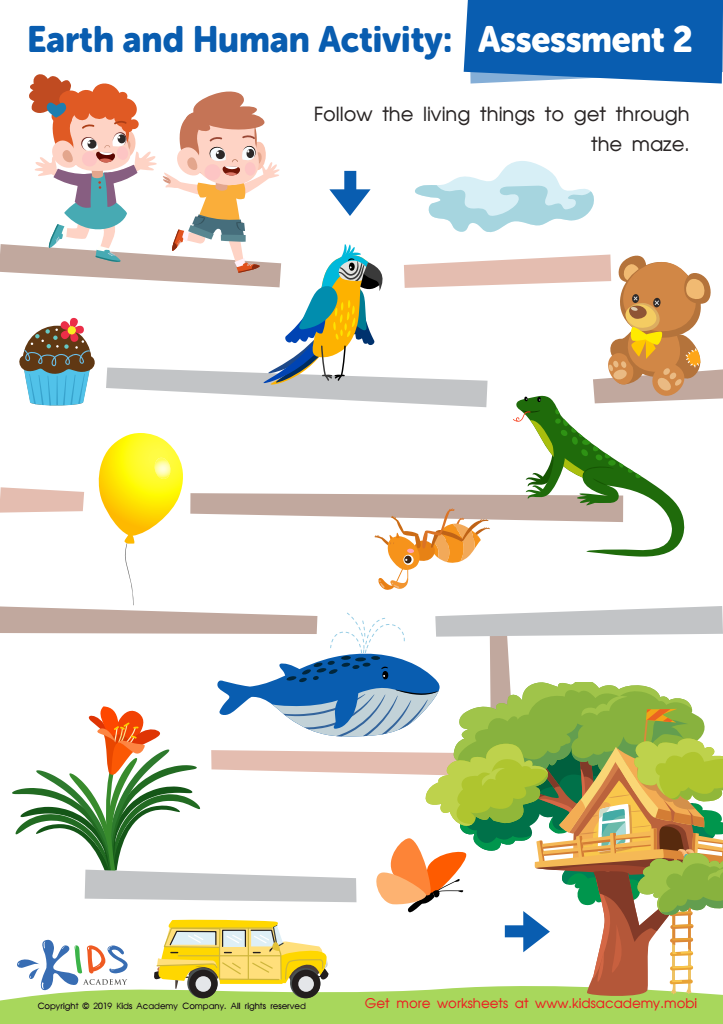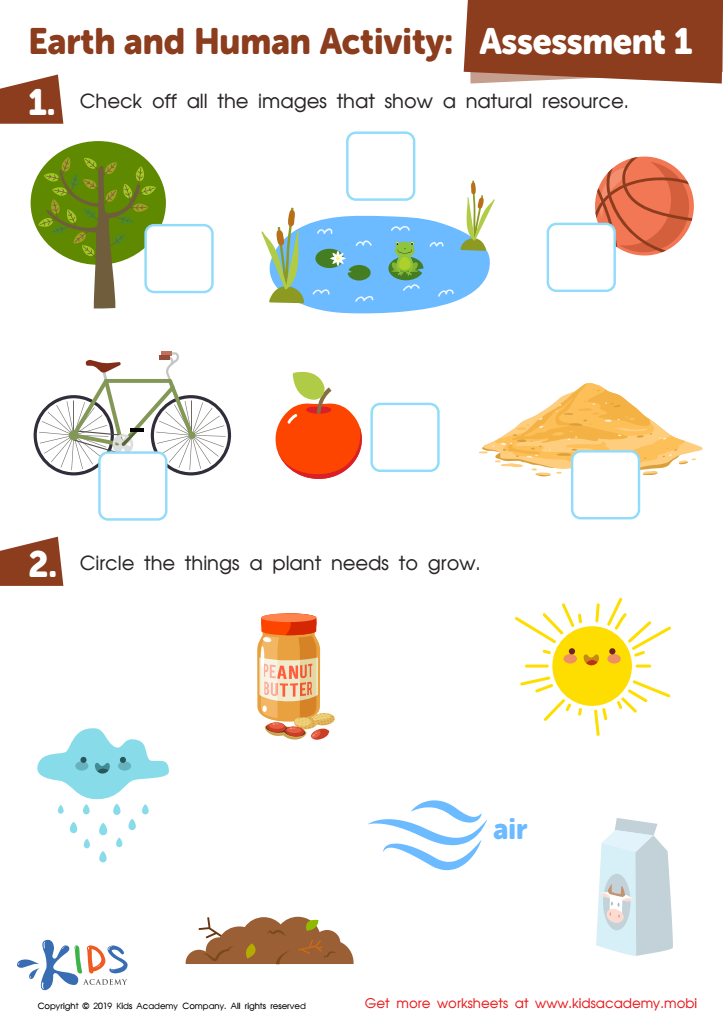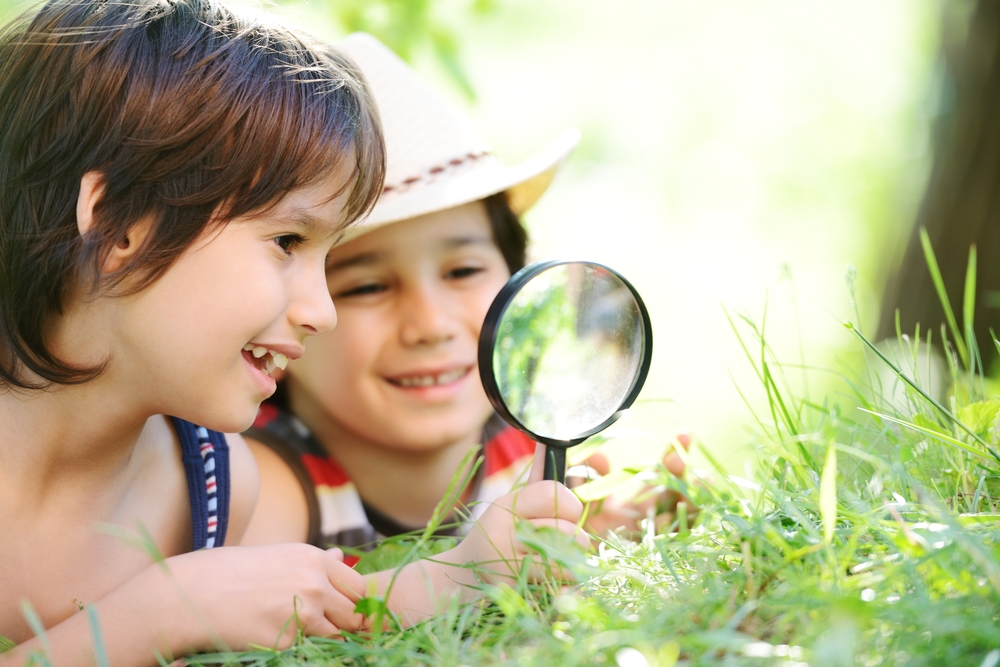Plants and Animals worksheets activities for Ages 4-6
2 filtered results
-
From - To


Earth and Human Activity: Assessment 2 Worksheet


Earth and Human Activity: Assessment 1 Worksheet
Plants and Animals worksheets activities are an invaluable tool in the educational journey of students across various grades. These meticulously designed activities serve as a bridge connecting young minds to the intricate world of flora and fauna, making the learning process both engaging and informative. Let's delve into why these worksheets are so beneficial.
Firstly, Plants and Animals worksheets activities foster a sense of curiosity among students. When children work through these activities, they are encouraged to ask questions, seek answers, and explore the complex relationships between plants, animals, and their environments. This curiosity is the bedrock of scientific inquiry and critical thinking skills, essential components of comprehensive education.
Secondly, these worksheets offer a hands-on learning experience. Through activities such as labeling parts of a plant or identifying animal habitats, students are able to interact with the content in a tactile manner. This interactive approach caters to various learning styles, ensuring that visual, auditory, and kinesthetic learners all reap benefits from the same materials.
Moreover, incorporating Plants and Animals worksheets activities into the curriculum helps in reinforcing key concepts. Through repetition and varied approaches to the same topic, students can solidify their understanding of complex biological processes, lifecycle stages, and ecological principles. This reinforcement is crucial for retaining knowledge over time and applying it in new, unfamiliar contexts.
Additionally, these worksheets activities pave the way for interdisciplinary learning. They can be easily integrated with subjects such as geography, to discuss habitats and ecosystems, or art, to explore the beauty and diversity of life through creative projects. This interconnectivity enriches students' educational experiences and prepares them for a world where interdisciplinary knowledge is highly valued.
In conclusion, Plants and Animals worksheets activities are a cornerstone of effective biology education. They ignite curiosity, facilitate hands-on learning, reinforce key concepts, and encourage interdisciplinary thinking. By incorporating these resources into the learning environment, educators can significantly enhance their students’ understanding and appreciation of the natural world.
 Assign to the classroom
Assign to the classroom












